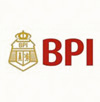All Categories
Vaughan Williams: A London Symphony (Original 1913 Version) / Butterworth: The Banks of Green Willow
Share Tweet
*Price and Stocks may change without prior notice
*Packaging of actual item may differ from photo shown
- Electrical items MAY be 110 volts.
- 7 Day Return Policy
- All products are genuine and original








About Vaughan Williams: A London Symphony
Product description CD Amazon.com Penned between 1911 and 1913 and first heard in May 1914, Vaughan Williams's A London Symphony was dedicated to the memory of George Butterworth (whose ravishing 1913 idyll The Banks of Green Willow opens proceedings here). It's the original version that Richard Hickox and the LSO champion so eloquently on this sumptuous-sounding Chandos issue--and a very different beast it is from Vaughan Williams's final revision of 1933. For starters, there's more than a quarter of an hour of extra material, much of it genuinely inspired and brimful of wondrous poetry. VW's scoring, too, was never more colorful, and it's surely not too fanciful to detect many a foreshadowing of Holst's The Planets. More significant, the work takes on a darker, tragic dimension (nowhere more potently, perhaps, than in the slow movement), and there's an astonishing passage in the expanded epilogue that even anticipates the opening movement of the 1921 Pastoral Symphony. In hindsight, VW made all the right decisions (the scherzo's second half, haunting though it is, pales next to the shuddering intensity of the revised coda), but no one should miss the opportunity to experience his original thoughts in all their epic sweep and tingling vitality. Utterly compulsive listening, then, and a "must buy" if ever I heard one. --Andrew Achenbach Review Both these works were completed in 1913. A light, airy reading of The Banks of Green Willow makes an attractive prelude to the symphony, with its darker undercurrents, Hickox striking a satisfying mean between Sir Adrian Boult's restraint and Jeffrey Tate's overstriving for expression. (Since Butterworth so opposed German domination of English music, it must be purely my fancy that we hear a Wagner Ring motif at 1'57"/2'22"!)A London Symphony was posthumously dedicated to Butterworth, who had in the first place urged Vaughan Williams to compose a purely orchestral symphony and then offered subsequent criticism. Butterworth also organized the reconstruction from parts of a full score for performance in 1915, when the original had been sent to Germany the year before and was unrecoverable. The score contained some 20 minutes more music than the revised version we know today. And that is the restoration authorized by Ursula Vaughan Williams for Richard Hickox's première recording. No further performances, she says. But I hope she will reconsider: what possible harm could it do to allow us to hear this in the concert hall, even though the composer fretted over what he feared was overlong, with some horrible modern music awful stuff' in it? (Let's hope, too, that Chandos will record Hickox in a complete cycle, as happened with Osmo Vänskä, after the BIS disc of Sibelius's first thoughts on his Fifth Symphony aroused such interest.)In the first of two separate booklet notes, the restored passages in the second to fourth movements are described, with score letter references, where timing indicators would have been far more helpful. The most obvious of these are the ending of the Scherzo, and at 5'44" when a slow, wistful section is introduced with harp figurations, solo violin and so on. The finale has a lovely reflective passage from 6'33" and the chimes (11'16") are pre-echoed, to lead to a much extended, faintly Mahlerian coda over four minutes of restored material here. So subtle is the construction of the slow movement that one would need to synchronize two CD players to appreciate all the restorations (or have a total mental recall of the revised version). This is the nub of the Hickox performance, which is finely balanced in the resonant setting of All Saints' Church, Tooting in London. As with his Chandos Fifth, he's a wonderfully sensitive interpreter of the whole piece. Christopher Breunig --



























